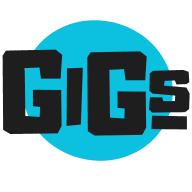3 Methods for Communicating With Clients and Keeping Projects On Track
Navigating client communication and project management can be a minefield for even the most seasoned professionals. This article delves into proven methods, fortified with expert insights, to maintain clear lines of communication and keep projects running smoothly. Discover the structured frameworks and detailed strategies that can transform the way you engage with clients and manage workflow.
- Weekly Check-Ins Keep Projects on Track
- Provide Detailed Project Updates
- Set Up Structured Framework for Updates
Weekly Check-Ins Keep Projects on Track
How Weekly One-On-One Check-Ins Keep Client Projects on Track
As the founder of a legal process outsourcing company, I know that clear and consistent communication with clients is the backbone of keeping projects on track. One method I swear by is setting up weekly check-in calls with clients to discuss progress, address concerns, and realign priorities.
This practice was born out of a real experience early in my journey, where a project went off track due to assumptions on both sides.
I realized that even the best project management tools can't replace direct conversations. We now use a combination of Microsoft Teams for video calls and Outlook for structured follow-up emails, summarizing key points and action items.
Once, during a critical project, a simple weekly call helped us catch and correct a misunderstanding about document formatting, saving us hours of rework and earning client praise for proactive handling. This blend of regular touchpoints and reliable tools ensures transparency and keeps everyone moving toward the same goal.

Provide Detailed Project Updates
Clear and consistent communication is essential in our line of work, and one method we rely on is providing detailed project updates at every stage of the process. Before starting any job, I meet with the client to discuss their specific needs, concerns, and goals for the project. This initial meeting helps set expectations and allows us to build trust from the start. Throughout the project, we provide daily or milestone-based updates via email, phone, or text, depending on what the client prefers. For larger projects, we create a simple progress report that outlines what's been completed, any challenges we've encountered, and the next steps. This open communication ensures clients feel informed and confident, while also giving them the opportunity to address any concerns before they become issues.
One specific example that highlights the value of this approach involved a homeowner with several mature oak trees that needed pruning and treatment for oak wilt. After our initial consultation, we used a combination of photos, a detailed written estimate, and follow-up calls to make sure they fully understood the plan. During the project, I personally checked in with the homeowner every day, explaining what was done and why it was necessary for the health of the trees. My certification as an arborist and TRAQ training were crucial here because I was able to confidently identify and explain the specific disease symptoms and the treatment options in terms the client could understand. Thanks to this hands-on communication, we not only resolved the immediate issue but helped educate the client about long-term tree care, which they appreciated immensely. By the end of the project, they were so satisfied they referred us to two neighbors, leading to more business and reinforcing the importance of clear, professional communication.

Set Up Structured Framework for Updates
One method I use to effectively communicate with clients and ensure projects stay on track is setting up a structured framework for regular updates and accountability. I've learned over the years that communication fails when it's inconsistent or unclear, so I always start by establishing a shared roadmap with clear milestones. For example, when I was working with a struggling marketing agency in Dubai, I implemented weekly check-ins via Zoom, where we reviewed their progress against specific KPIs that we had agreed upon at the start. I also made use of project management tools like Asana to create visibility for the entire team, allowing everyone to see what tasks were being completed and where bottlenecks were occurring. This system created a culture of accountability and reduced misunderstandings because everyone knew what was expected and when.
My years of experience have taught me that communication is not just about talking, it's about creating systems that make it impossible to drop the ball. In this particular case, the business owner went from feeling overwhelmed and reactive to being proactive and in control within 60 days. My background in telecommunications gave me a strong understanding of how to streamline information flow, and my MBA in finance helped me prioritize key metrics that mattered most to their bottom line. By blending technology, strategy, and structured communication, we not only hit their revenue goals but also improved team morale significantly. It's proof that clear communication combined with the right tools can drive transformative results.


